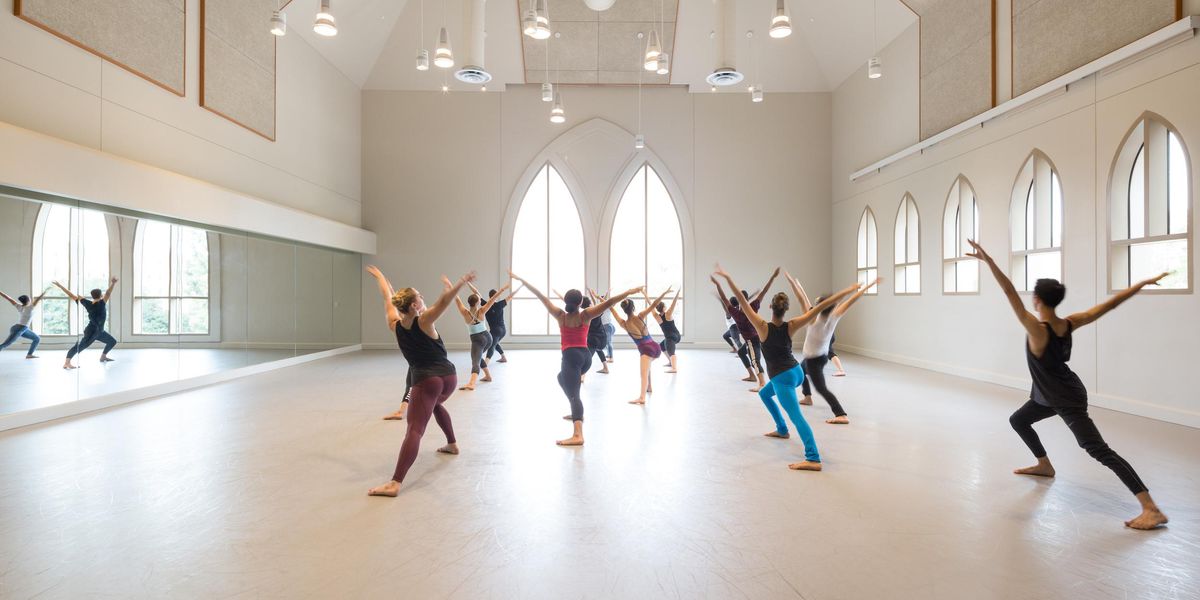Technique My Way: Faye Arthurs
The New York City Ballet dancer shares her health habits.
In an age when everyone in the professional ballet world is expected to have six o’clock penchées, it’s rare to be impressed by a dancer’s flexibility. But New York City Ballet corps member Faye Arthurs’ sumptuously supple extensions are the gold standard. The Virginia-born dancer, who trained at the New Jersey School of Ballet and Pittsburgh Youth Ballet School before coming to the School of American Ballet, has been a standout at NYCB in roles like the White Cat in Peter Martins’ Sleeping Beauty and Helena in Balanchine’s A Midsummer Night’s Dream—parts that showcase her dramatic flair as well as her fantastic flexibility.
Faye Arthurs in the studios at New York City Ballet
Thirteen years into her career, and still dancing a punishing schedule of corps and soloist roles, Arthurs has found her hyper-mobility to be a curse as well as a blessing. She keeps the “wonkyness,” as she calls it, in check by focusing on stabilization exercises. And as an NYCB veteran, she’s discovered that the key to surviving the company’s jam-packed seasons is to develop a customized warm-up for each ballet.
Getting the Engines Started
Arthurs is a regular in Nancy Bielski’s morning classes at Steps on Broadway, but she’s “notoriously bad at getting up and making it to class on time,” she admits. To prepare herself, she’s developed a morning ritual that involves strong, black coffee, a balanced breakfast of whole-wheat toast with almond butter or oatmeal with berries, and The New York Times crossword puzzle. “I’m kind of a fanatic about finishing it every morning,” she says. “It helps me focus and get my brain revved up for the day.”
Taming the Wonk
“My lower back is extremely flexible, and I need to counter that with a lot of lower abdominal work,” Arthurs says. She works regularly with Cameron Gomez of Westside Dance Physical Therapy to stabilize the area. “When you’re younger, flexibility is a lucky thing; when you’re older, it’s more problematic. Cameron helps me deal with my hypermobility, to keep me from injuring myself. We do a lot of strengthening and alignment exercises.”
Beyond Ballet
Two years ago, Arthurs underwent foot surgery to treat a rare cyst that took years to diagnose. (The surgeon drilled into the cyst and filled the hole with bone marrow from her pelvis.) “It was a unique overuse injury,” she says, “stemming from the fact that I have specialized in hopping on pointe throughout my career, especially on my left foot.”
During her recovery period, Arthurs discovered Gyrotonic. “It helps me push through the fear my body now has about working that foot—the muscle memory of the injury,” she says. She also swears by acupuncture. “Everyone’s body reacts to it differently. For me, it was a sudden understanding of the connections between different muscles and muscle groups, how one can stimulate another,” she says. “And it’s really good on the hamstrings if you’re super-flexible. It’s hard for me to get a good hamstring stretch on my own, but acupuncture forces those muscles to release.”
Preventive Prep
Arthurs practically knows the NYCB repertoire inside and out—and the different ways each ballet will make her hurt. Over the years, she’s learned to plan ahead to prevent the after-effects. A role that causes her calves to grip, like one of the polonaise-filled demi-soloist parts in “Diamonds,” from Balanchine’s Jewels, requires strategic marking on the day of the show and extra calf stretches before curtain. “One of my favorite parts is Helena in Midsummer Night’s Dream,” Arthurs adds. “But you’re flinging your back and neck around the whole time, so I’ll do a solid upper body workout beforehand. And Four Temperaments is all about thrusting the hips forward, which makes your stomach incredibly sore, so I’ll do more core work leading up to that.”
Cooking Therapy
During the day, Arthurs grazes on bananas, yogurt, and her favorite granola from Early Bird Granola—“lots of small but potent snacks,” she says. But after hours of dancing, she likes to unwind by cooking a real dinner in her Brooklyn apartment. “Ten years ago, I was storing jeans in my oven,” she says. “But my boyfriend is a great cook, and we now have an apartment with a huge kitchen, so I’ve been learning slowly. It’s very relaxing, and it’s totally transformed the way I eat. A lot of us in the company have gotten into cooking because it’s nice to have control over what’s going into your body, to treat your instrument as best you can. If you make an effort to use local ingredients and you make it yourself, you really can’t go wrong.”
Faye’s Kale Stew Recipe
“This is my go-to after late performances,” Arthurs says, “especially when there are mountains of kale at the farmer’s market by Lincoln Center. It’s very healthy: The garlic and chili flakes have anti-inflammatory properties, the beans provide some protein, and kale is loaded with nutritional benefits, including vitamins A, K, calcium, and iron.”
1 large bunch kale, washed, with stems removed
A few sprigs fresh thyme
Minced garlic cloves (to taste; Arthurs prefers 8–10 cloves)
1/4 cup olive oil
Chili flakes (to taste)
15-oz can cannellini beans (drained and rinsed)
15-oz can crushed or diced tomatoes
15-oz container vegetable broth
Put the oil in a Dutch oven or another large pot, and place over medium heat until the oil shimmers. Add the garlic and chili flakes and sauté for a minute or two. Add the kale and vegetable broth, and bring the liquid to a boil. Reduce the heat to a simmer and cover the pot for about 5 minutes to wilt the kale. Add the cannellini beans, the tomatoes, and the thyme. Salt and pepper to taste. Cover and let the stew simmer for 10–15 more minutes.
PIctured at topMargaret Fuhrer is an associate editor at
Pointe and Dance Spirit.





